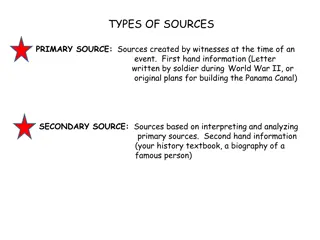Understanding RoHS and China RoHS Compliance Regulations
RoHS and China RoHS are regulations that restrict the use of hazardous substances in electronic products to reduce environmental impact. RoHS targets substances like lead and mercury, while China RoHS is specific to pollution control in electronic products sold in China. Compliance with these regulations involves ensuring banned substances are below specified concentration levels.
Download Presentation

Please find below an Image/Link to download the presentation.
The content on the website is provided AS IS for your information and personal use only. It may not be sold, licensed, or shared on other websites without obtaining consent from the author. Download presentation by click this link. If you encounter any issues during the download, it is possible that the publisher has removed the file from their server.
E N D
Presentation Transcript
SUPPLIER MATERIAL COMPLIANCE DECLARATION Material Compliance Dept 6thApril 2016
CONTENTS Purpose Material Compliance - RoHS - RoHS China - REACH - IMDS (Automotive) - CAMDS (Automotive-China) - Conflict Mineral (CMRT) Jabil Material Declaration Process Acceptance Reporting Format Acceptance Criteria Reference Links 2
WHAT IS PURPOSE? To create awareness on Jabil Material Compliance. To create better understand on Jabil Material Declaration Process. To provide guideline on Jabil Material Declaration Reporting Format. 3
WHAT IS RoHS? Restriction of Use of Hazardous Substances (RoHS) regulations limit or ban specific substances -- lead, cadmium, polybrominated biphenyl (PBB), mercury, hexavalent chromium, and polybrominated diphenyl ether (PBDE) flame retardants in new electronic and electric equipment RoHS aims to reduce substances which help to make those products easier and safer to treat and recycle when they become waste. 4
WHAT IS RoHS COMPLIANCE? Six banned substances must not present in homogenous materials above the max concentration value, unless exempted : Maximum Threshold level (homogenous) Substances Lead 0.1% (1000 ppm) Mercury 0.1% (1000 ppm) Hexavalent chromium Cr(VI) 0.1% (1000 ppm) Cadmium 0.01% (100 ppm) Polybrominated biphenyl (flame retardants) PBB 0.1% (1000 ppm) Polybrominated diphenyl ether (flame retardants) PBDE 0.1% (1000 ppm) The threshold must be calculated at the Homogeneous Material Level 5
WHAT IS CHINA RoHS? China RoHS (Restriction of Hazardous Substances), officially known as Administrative Measure on the Control of Pollution Caused by Electronic Information Products, is the official measure for pollution control in electronic products in China. Applies to products imported into China for sale in China; and products manufactured in China and sold in China but excludes: - Imported into China for re-export or manufacturing of products for export - Components sold to an OEM who use in their own products. - Hong Kong and Taiwan. 6
WHAT IS CHINA RoHS COMPLIANCE? China s RoHS is similar to the European version of RoHS which regulates cadmium, lead, hexavalent chromium, mercury and two brominated flame retardants, Polybrominated biphenyls (PBB) and Polybrominated diphenyl ether (PBDE). Classification of Materials/ Maximum Permitted Values Type Maximum Threshold level (homogenous) Each homogenoeus material in EIPs All 0.1% by weight except cadmium at 0.01% (as EU RoHS) EIP - A Metal Plated Materials in each part of EIPs The restricted substances shall not be added intentionally EIP - B Small components that cannot be separated (standard states < 4mm3, All 0.1% except cadmium at 0.01% EIP - C The threshold must be calculated at the Homogeneous Material Level 7
WHAT IS REACH? Registration, Evaluation, Authorization and Restriction of Chemicals (REACH) is a European Union Regulation REACH addresses the production and use of chemical substances, and their potential impacts on both human health and the environment. REACH covers use of chemical substances of very high concern (SVHC) because of their potential negative impacts on human health or the environment. 8
WHAT IS REACH COMPLIANCE? Evaluate articles that contain substances of very high concern >0.1% by weight and totaling >1 ton/year If the level of SVHC is at a higher level than 0.1% w/w then you have a duty to supply the recipient with sufficient information to allow safe use of that article. If the level SVHC is at a higher level than 0.1w/w and it can be intentionally released and present in the article or preparation at greater than 1 tonne per annum, then the ECHA will need to be notified and the SVHC will need to be registered. 9
WHAT IS IMDS? International Material Data System (IMDS) is a global data repository that contains information on materials used by the automotive industry. In IMDS, all materials used for automobile manufacturing are collected, maintained, analysed and archived. Using the IMDS, it is possible to meet the obligations placed on automobile manufacturers, and thus on their suppliers, by national and international standards, laws and regulations. 10
WHAT IS CAMDS? China Automotive Material Data System (CAMDS) is a product data management platform for implementing the Recycling and Reutilization Policy of Automotive Product , carrying out the certification of recoverability rate and prohibited/restricted substance and improving the recoverability rate of China automotive material. CAMDS provides a solution to trace the chemical composition of auto parts in the whole supply chain for China automotive industry and improves the scrapping and recycling level of component material of China auto products. 11
WHAT IS CONFLICT MINERAL? Conflict Mineral is a U.S. Securities and Exchange Commission released rules for Section 1502 of the Dodd-Frank Wall Street Reform and Consumer Protection Act. These rules require U.S. publicly traded companies to trace the tantalum, tin, tungsten and gold (3TG) in their products and disclose whether they came from "conflict mines" in the Democratic Republic of the Congo. Companies subject to the SEC reporting requirement would be required to disclose whether the minerals used in their products originated in the DRC or adjoining countries (as defined above). 12
JABIL MATERIAL DECLARATION PROCESS FLOW Suppliers submit the completed material declaration documents to respective individual requester / Jabil group email, environmental_compliance@jabil.c om or Conflict_Minerals@jabil.com or online portal (IMDS& CAMDS). Suppliers are required to prepare material declaration documents for every requested part numbers within 2 weeks. * Upon MCR request/ PO requirement/ site purchasing requirement Material Declaration Closed Data verification process Accept Reject Supplier revise the material declaration document based on the comment within 3 to 5 days Note : (*) Subjected to project requirement 13
ACCEPTANCE REPORTING FORMAT Requirement Reporting Format Notes RoHS ECC / IPC-1752-2 Class 6 Full Material Composition Declaration CHINA RoHS ECC / IPC-1752-2 Class 6 Full Material Composition Declaration REACH ECC / IPC-1752-2 Class 6 Full Material Composition Declaration IMDS IMDS Portal http://www.mdsystem.com/imdsnt/start page/index.jsp CAMDS CAMDS Portal http://cuc2.camds.org/camds/mainpag e.action?request_locale=en Conflict Mineral (CMRT) CFSI_CMRT (Latest Revision) http://www.conflictfreesourcing.org/ 14
ACCEPTANCE CRITERIA Reporting Format Acceptance Criteria General 1. 2. 3. Validity for all declared documents must within 2 years. Declared in Manufacturing Part Number (MPN). All declared documents language must be English, except standard template with language option. ECC- ElectronicComplianceConnect 1. 2. 3. 4. 5. No Error and Warning Message. Measured Part Weight per Length/Area/Volume Unit must be Each Raw Material Submission default to No . RoHS Exemption must include for RoHS banned substances Must certify and export to mcc. format. IPC-1752-2 Class 6 1. 2. 3. 4. 5. 6. 7. 8. 9. 10. Exclude PPM. Form type must choose Request/Reply . Declaration class must be Class 6 My Supplier ID and red highlighted Existing Field must fill-in. Unit type must be Each Manufacturing Process Information must include, if applicable. Declaration Type always Simplified or Detailed Must include Digital Signature. Homogenous Material Name must be unique. Choose the correct substance level for JIG A/B. 15
ACCEPTANCE CRITERIA Reporting Format Acceptance Criteria Certificate of Compliance (CoC) 1. 2. Referencing the relevant regulation. Contain a definitive Compliance statement. Provide the applicable exemption if any. State the part number or part family under scope clearly. In manufacturer letter head with manufacturer logo. Preferably with an authorized signature. 3. 4. 5. IMDS 1. Material name and classification must be unambiguous/descriptive in line with IMDS Recommendation 001. No Error and Warning Message. Do not declare using SINGLE substance per material. 2. 3. CAMDS Conflict Mineral (CMRT) 1. 2. 3. 4. 5. Yellow highlighted field must be fill-in. Declaration document must be declared by manufacturers. Smelter info must be available, if 3 TG exist in declared products. For declaration with product scope, ensure Product tab is fill in. Check on Checker tab to ensure all required fields are in green before submit. 16
REFERENCE LINKS Requirement Web link RoHS http://ec.europa.eu/environment/waste/rohs_eee/index_en.htm http://www.rohsguide.com/ China RoHS REACH http://www.chinarohs.com/ http://ec.europa.eu/environment/chemicals/reach/reach_en.htm http://echa.europa.eu/chem_data/candidate_list_table_en.asp IMDS http://www.mdsystem.com/imdsnt/startpage/index.jsp CAMDS http://cuc2.camds.org/camds/mainpage.action?request_locale=en Conflict Mineral http://www.conflictfreesourcing.org/ Jabil Supplier Portal http://www.jabil.com/portals/suppliers/ Jabil BaRS requirement http://www.jabil.com/portals/bars-requirement.html Jabil Conflict Mineral Policy http://www.jabil.com/portals/conflict-minerals-policy.html 17
THANK YOU 18























